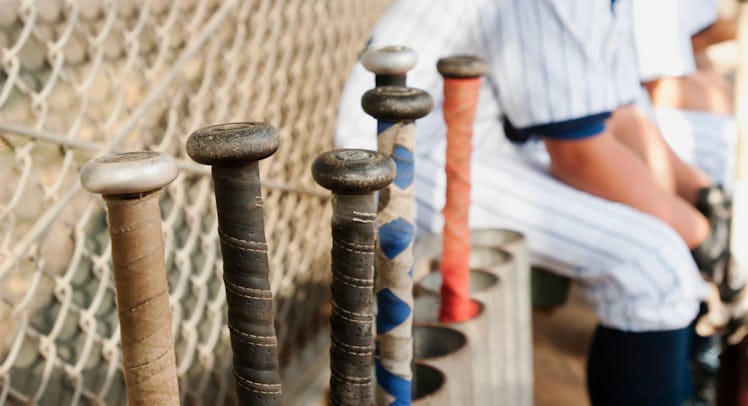Little League Has Adopted a New, Wood-ish Bat Standard
New developments in batting technology and sports safety are are changing the game.

Though spring is a ways off, Little League Baseball is already making moves likely to have profound effects on the 2018 season. The organization has started 2018 by adopting a set of new equipment requirements that will further regulate what types of bats players can use. The primary goal of these new regulations is to ensure that the metal bats used in Little League will hit the ball more like the wooden bat used by professional players.
As of January 1st, the Little League junior division will enforce a 2 ⅝ inch barrel maximum (that was previously to 2 ¼ inches). This is intended to create a wider surface area and reduce the trampoline effect caused when a metal bat hits the ball, effectively making it more difficult to hit the ball extremely hard. Along with new regulations regarding barrel-size, BBCOR (composite) bats, which are designed to have a similar effect, but for players at a high school or college level, will also be prohibited. All bats used in the Little League will have to be marked with the “USABat” label, and bats marked with the “BFP 1.15” will no longer be standard or permitted for use in any Little League activities, including practices or games.
The stated goal of the recent changes is for little leaguers to use bats that feel and play like they are made from wood. A wooden bat naturally has a more ‘dead’ feel, meaning baseballs couldn’t be hit as hard or go as far, while metal bats have a ‘pop’ to them that players have come to like. The problem with pop, according to the finding of the Bat Study Committee convened by USA Baseball, is that high-velocity hits lead to more injuries in the field.
The primary safety concern surrounding metal bats that don’t hit like wooden bats stems from the speed at which a metal bat can be swung. Because metal bats have hollow barrels and solid handles, the location of their balance point decreases resistance to motion thus increasing the speed of every ball hit. Research suggests that doubling swing speed increases ball speed by 35 percent. This issue is compounded by the fact that metal bat actually has more pop as they age so they deviate away from the norm.
Before implementation of the new standard, lawsuits and injuries brought the issue to the fore. The most notable and saddest piece of litigation came before the Montana Supreme Court, which supported a family’s claim that the use of a metal bat contributed to the death of their 18-year-old son after a ball struck the young pitcher in his temple during a game. Louisville Slugger, the bat manufacturer paid out almost $1 million to the family after the court agreed that the company did not adequately emphasize the potential dangers of using the metal in the bat.
The new bat standard could be an expensive adjustment for parents putting their kids in Little League this year. To combat this, local leagues “in good standing with Little League International” can apply for the Bat Grant Program which will provide a limited amount of bat kits to leagues in need.